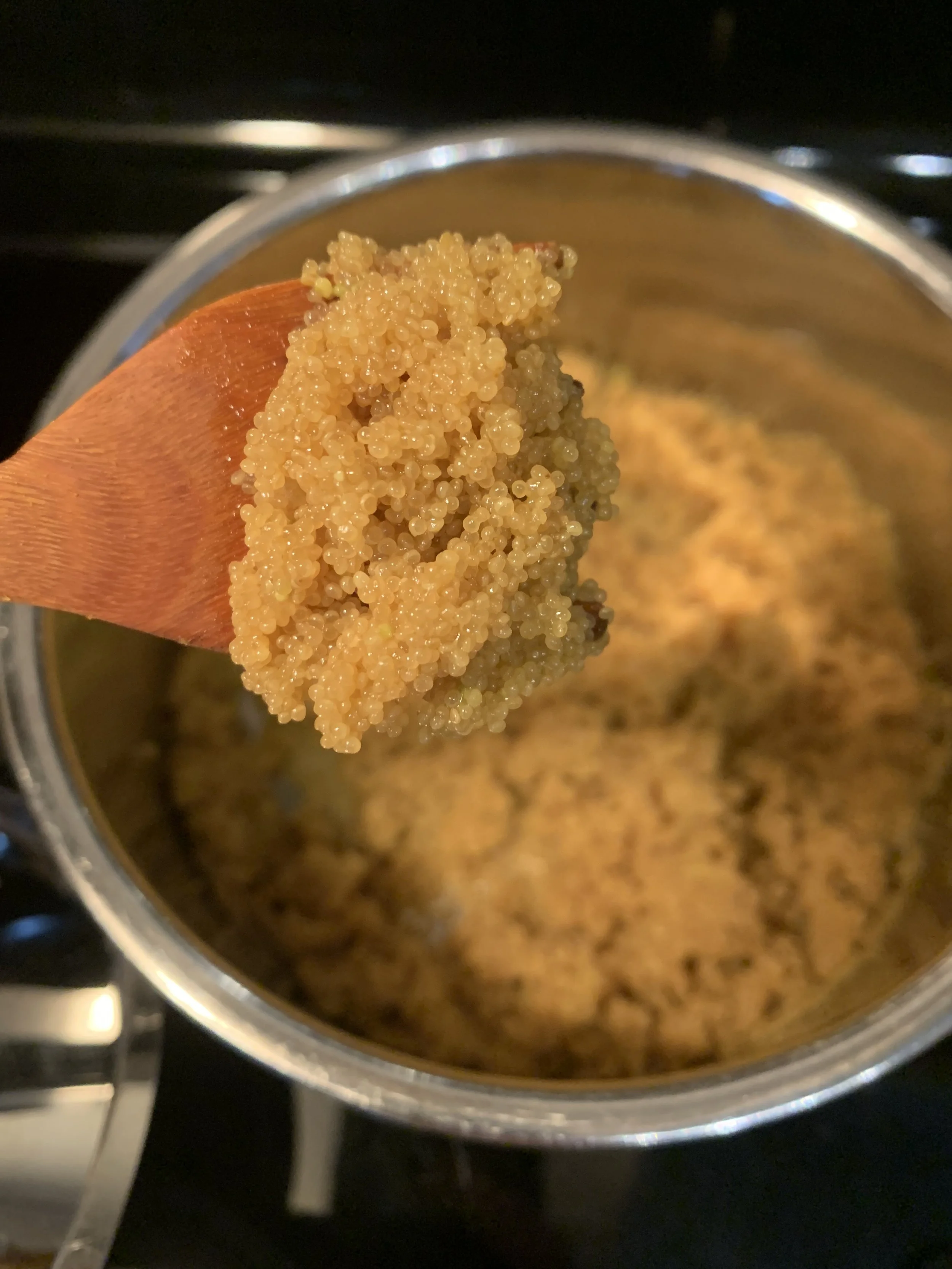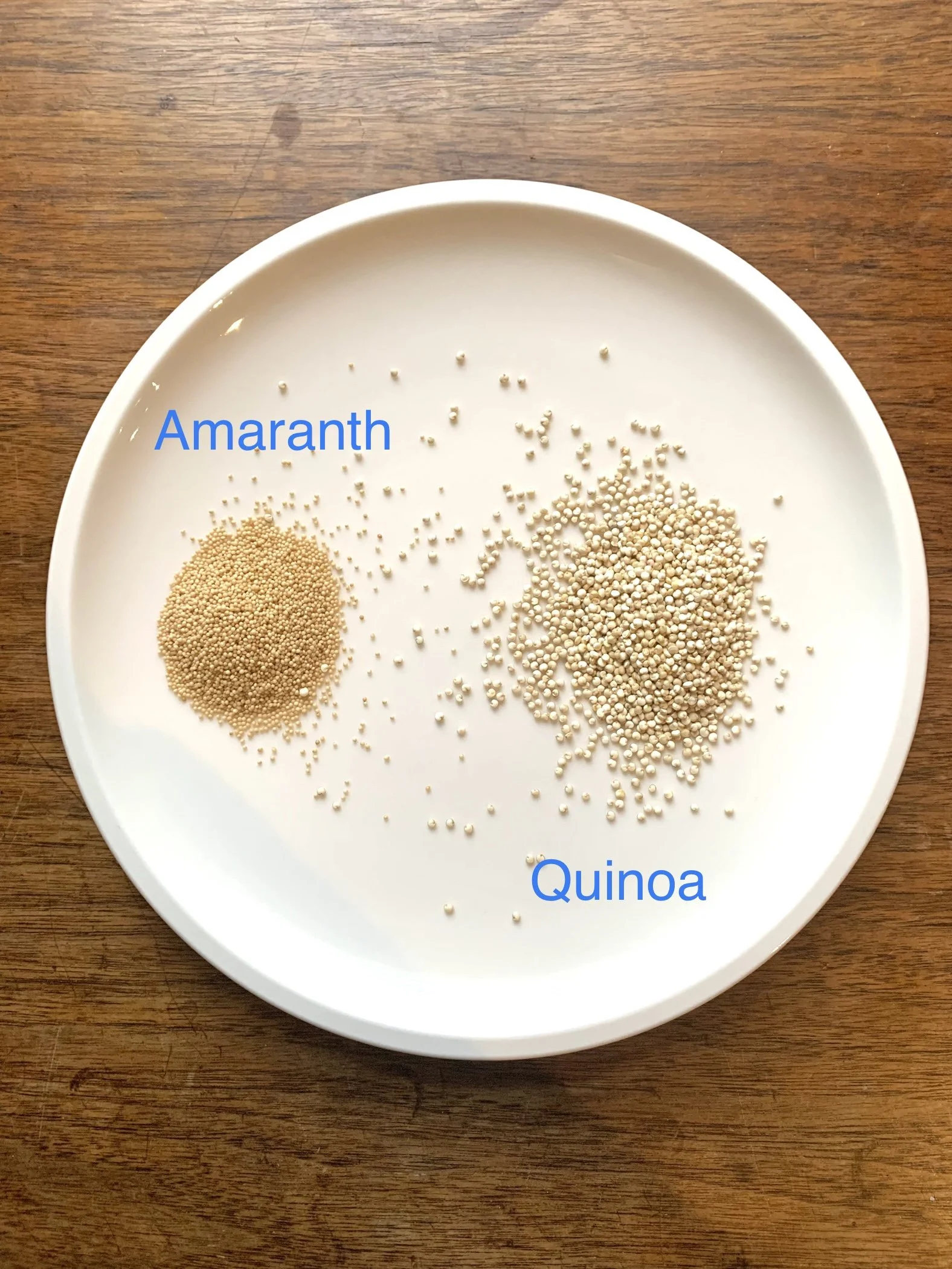How To Cook Amaranth
WELCOME TO MY BLOG! I’M EVANGELINE & A MOM. ALSO, AN RMT, and AYURVEDA-YOGA COUNSELLOR. I STARTED MY BLOG DURING COVID TO STAY CONNECTED TO MY CLIENTS AND SHARE MY LOVE OF COOKING HEALTHY, AYURVEDIC MEALS.
AYURVEDIC COOKING TAKES A BALANCED, HEALING APPROACH FOR YOUR DAILY COOKING NEEDS. YOU WILL FIND SIMPLE, EASY TO MAKE NOURISHING MEALS I HAVE MADE FOR MY FAMILY, WITH A DOSE OF AYURVEDA & YOGA WISDOM.
Amaranth is an often overlooked grain, but has steadily grown more popular in the West. Amaranth is a high protein seed, in fact a complete protein containing all essential amino acids, and referred to as a pseudo-grain, alongside quinoa and buckwheat. We have amaranth for breakfast, or at lunch or dinner as part of a meal, and keep it on rotation with other whole grains.
Amaranth can be mistaken for quinoa, but when cooked offers a more chewy texture and earthier flavour.
Because amaranth is quite a small seed, smaller than quinoa or millet, ensure your strainer has very fine holes when rinsing.
Nutrient and Ayurvedic Profile of Amaranth
gluten-free and actually a seed, like quinoa and buckwheat
excellent source of protein, higher than wheat, higher also than other seeds, spinach and meat
contains all essential amino acids the body needs
rich in complex carbohydrates, fibre, antioxidants, vitamins and minerals
very high in iron and phosphorous with a significant amount of calcium, potassium, and magnesium
high in lysine and tryptophan, both amino acids (building blocks of protein)
a good ratio between saturated and unsaturated fatty acids, with strong resistance to oxidation
contain phytochemical compounds, rutin and nicotiflorin - photochemicals strengthens the immune system, reduces inflammation, prevents DNA damage and helping DNA repair, and slows down cancer cell growth
contain natural peptides with antihypertensive and anticarcinogenic activities
known in Ayurveda as Rama’s grain (Rajgira) with a sweet taste and slight pungent post-digestive effect
As with all things, including spices, more is not necessarily better, even if it is good for you. Ayurveda pays close attention to the therapeutic value of spices and food with the understanding of their gross and subtle qualities. According to Ayurveda, food (ahara) is the first of three sub-pillars. Rest (nidra) and right action in thought, word and deed (brahmacharya) are the other two. They function as a hierarchy. Food influences quality of sleep, and quality of sleep affects our mind and actions. Spices tie in with food, as they derive from plants, and each have their own unique therapeutic properties, as modern science is discovering.
How To Cook Amaranth
Makes 2-3 Servings
Prep Time: 5 minutes
Cook Time: 20 minutes
Ingredients
½ cup amaranth
1 ¼ cup water
½ tsp ghee or pure olive oil or coconut oil
¼ tsp ground fennel
¼ tsp ground coriander
2 pinches cumin
2 pinches turmeric
Directions
Rinse amaranth. Set aside.
Toast the spices with ghee, olive oil or coconut oil for a few minutes, and add amaranth and water.
Let it come to a boil, stirring occasionally until most of the water has been absorbed, about 10 minutes.
Cover with a lid, turn stove off and cook for another 10 minutes. Half way through cooking, open the lid, stir down to the bottom of the pot, and cover again to cook further.
Salt to taste and serve with your choice of vegetables and protein.
Finish with a drizzle of lime juice.
Enjoy!
Amaranth can be mistaken for quinoa, but as you can see, amaranth is smaller and more beige in colour. Quinoa also comes in black and red varieties.
Reference
Research - Amaranth lunasin-like peptide internalizes into the cell nucleus and inhibits chemical carcinogen-induced transformation of NIH-3T3 cells https://pubmed.ncbi.nlm.nih.gov/20599579/
Research on Amaranth: https://pubmed.ncbi.nlm.nih.gov/28239982/
Chemical Composition of Amaranth: https://www.ncbi.nlm.nih.gov/pmc/articles/PMC8871380/
Vaidya R. K. Mishra- Notes from Shaka Vansiya Ayurveda Courses, Practicum, Conferences and Lectures 2003-2015


